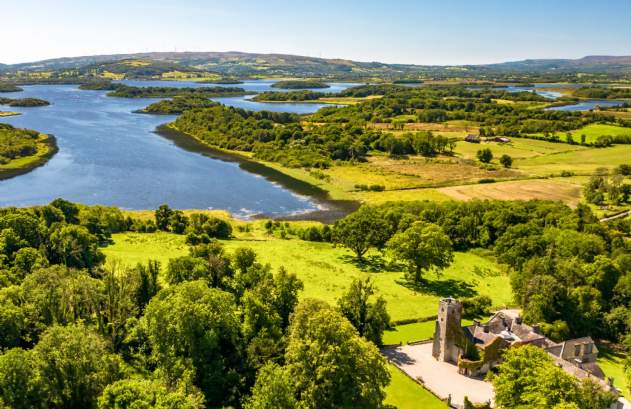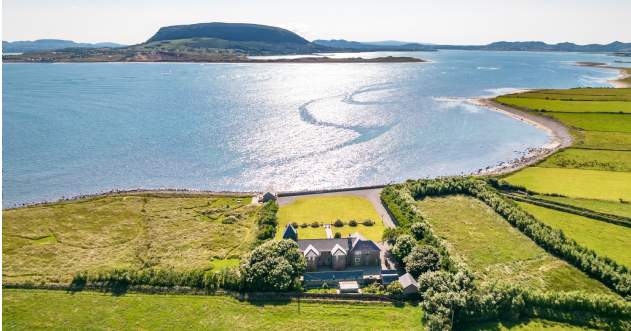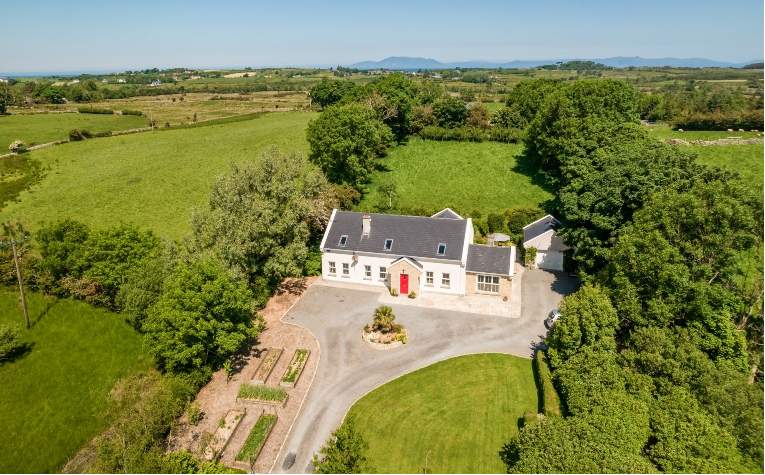Belle Isle Estate, Fermanagh
Belle Isle Estate is an exceptional mixed-use country estate situated in an outstandingly picturesque and ecologically important location on the banks of Lough Erne in County Fermanagh. The principal residence at the core of the property is the castle, listed Grade B+ for its architectural and historic importance.
Belle Isle Estate is steeped in rich history. Dating back to before the 15th century, it is where one of the most important historical articles of medieval Ireland was written, the Annals of Ulster. The Annals of Ulster were compiled by Cathal Og MacManus, Irish historian and chief of the MacManus clan, with this important manuscript remaining on the estate from circa 1632-1636. The MacManus clan were the earliest owners and occupiers of Belle Isle.
The Flight of the Earls in 1607 allowed for the transfer of ownership to Paul Gore, as James I declared the estates of the refugee Earls forfeit. Paul Gore who had travelled to Ireland in circa 1598, as an Elizabethan soldier of fortune, was granted 1,000 acres in County Fermanagh including the island of Ballymacmanus (derived from the owner’s surname), the future Belle Isle.
Belle Isle Estate, as we know it today, first began solely as a private house which was renamed as Belle Isle and inhabited by Sir Ralph Gore, 4th Baronet around 1700, after his father had passed on possession. Sir Ralph Gore’s son, also named Sir Ralph Gore, was born in circa 1725 and is chiefly remembered for building Belle Isle Castle and significantly expanding the estate. With the assistance of Thomas Wright, he is remembered for overseeing the construction of the cottages, the tower, and the exquisite garden. When Sir Ralph Gore, 6th Bt, 1st and last Earl of Ross and Viscount Belleisle, died in circa 1801, the ownership of Belle Isle Estate was passed on to Lady Mary Hardinge, his only surviving child. Lady Hardinge left the estate to her nephew, The Rev Sir Charles Hardinge who in turn sold it to The Rev John Grey Porter of Kilskeery. His son, another John Porter, took up residence in Belle Isle at some point between 1839 and 1856, where he resided until his death in circa 1903.
The last owner of Belle Isle from the Porter line was Miss Lavinia Baird. A new chapter for Belle Isle Estate began when Miss Baird sold the estate to the Duke of Abercorn in October 1991. Explore further of the estate here.
.jpg)


(2).jpg)
.jpg)
.jpg)
11(2).jpg)
(1).jpg)

.jpg)
.jpg)

(1).jpg)